Ammonium for peppers
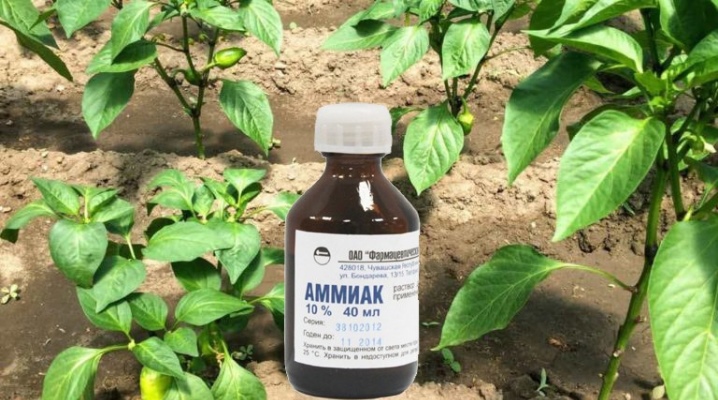
Mineral components are an essential part for growing various useful plantings such as peppers or tomatoes. Nevertheless, everywhere and everywhere you need to know the rules of their application, so as not to destroy the plants, but, on the contrary, to support them. There are a lot of questions on this topic. Let's try to answer them.
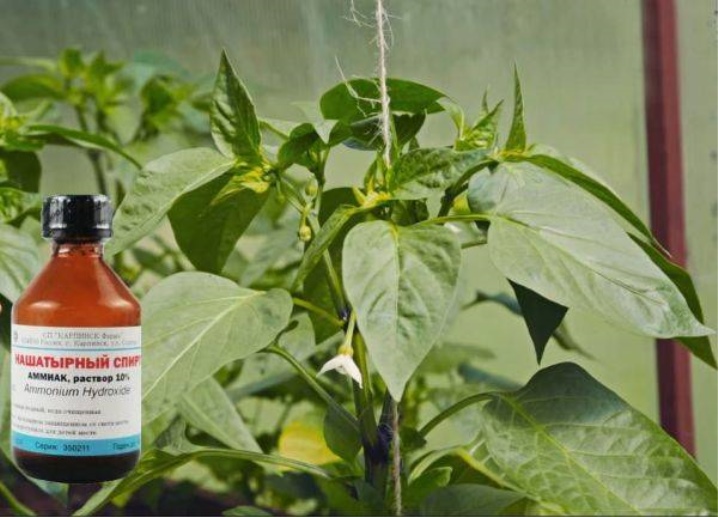
Advantages and disadvantages
Nitrogen is found in ammonia. It is this element that is needed for the correct cultivation of cultivated plants. In addition, this chemical unit is available to any buyer due to the fact that it is on the free market.
Every experienced gardener knows: ammonia is very important for peppers. Watering the plant with ammonia preserves the excellent qualities of the plantings... However, you say: ammonia is hazardous to health. After all, all useful plants are capable of accumulating a large amount of nitrates.
To which the objection will follow: farmers choose this tool because the nitrogen contained in it in the form of ammonia does not accumulate in green spaces. Therefore, it can be safely used in the garden, and not be afraid of the consequences.
You also need to know: the use of ammonia for bell peppers has its pros and cons.
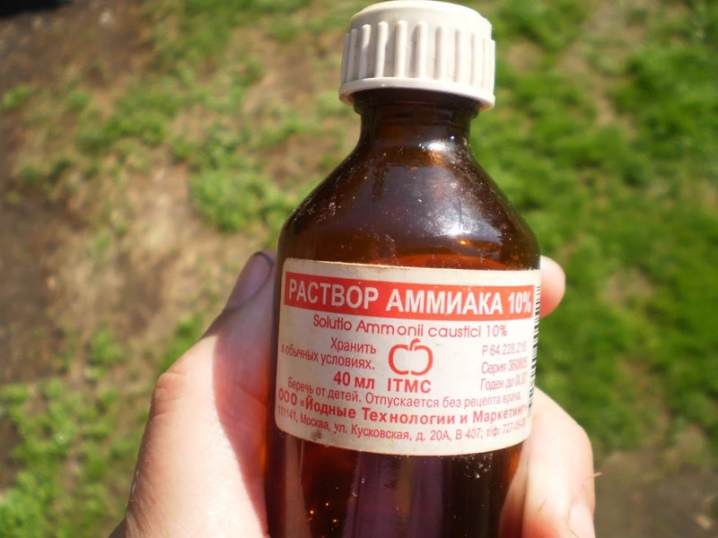
So, ammonia is universally available. This remedy can be bought both at a pharmacy and in a specialized store.
Pros to use:
-
ammonia contains up to 78% nitrogen;
-
increases productivity quite strongly;
-
when used correctly, it does not harm plants;
-
strengthens plant immunity;
-
prevents the development of chlorosis;
-
quickly revives plants;
-
well absorbed in the soil, destroys parasites.
However, everyone, without exception, needs to know about the disadvantages of ammonia.
-
With very frequent use, it leads to soil acidification.
-
In case of an overdose or if the solution is not prepared correctly, it can be harmful.
-
If you are allergic, then you need to be careful when handling the ammonia solution. If drooling occurs, provide yourself with fresh air.
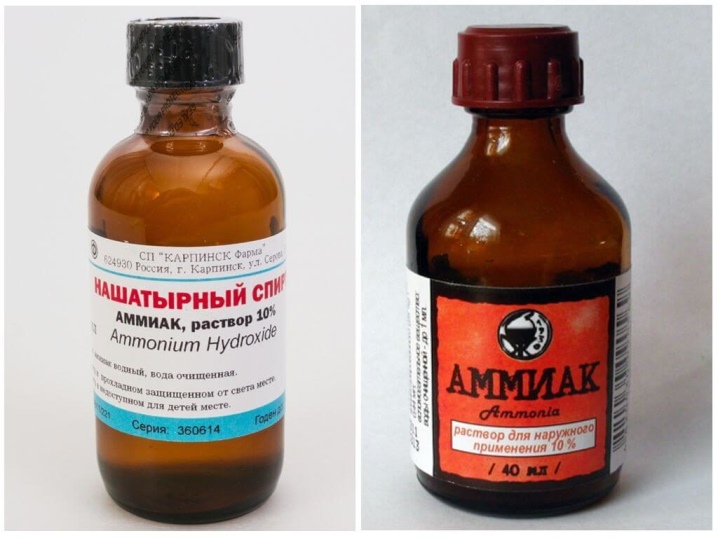
How to dilute?
Novice gardeners need to know: ammonia is a compound that occurs in the natural nitrogen cycle. Therefore, ammonia is easily converted to nitrogen. As a result novice gardeners should feed the plants with an aqueous solution of ammonia... Water will not allow the bushes of useful plantings to be oversaturated with nitrogen.
You should know: ammonia water is the safest both for the plants themselves and for people who will subsequently eat the fruits... The only condition is adherence to the dosage. Then you can safely water the plants with a solution, and not be afraid of the consequences.

It is better to use ammonia at the same time as boric or citric acid.
Why add such elements? Everything is very simple. If you add only one ammonia to the soil, then the soil can quickly lose its beneficial properties. Thanks to boric acid, plants are fed, and the composition of the soil will not be disturbed and will only get better.
Consider how to properly dilute ammonia and boric acid to get the correct chemical composition... Take a 10 liter bucket of water. Add 1 tablespoon of ammonia and 1 tablespoon of boric acid there. Mix everything - and pour this mixture on your peppers.
Try not to overdo it. Carry out two manipulations until June - and that's enough. The interval between dressings should be at least 2 weeks..
Consider another recipe.To rid your peppers of pests, and at the same time to feed, you need to dilute 2 tablespoons of ammonia in 10 liters of water. Place the mixture under the roots of the plants, and after a while they will thank you. Their leaves will return to a rich green color, and the pests will disappear without a trace.
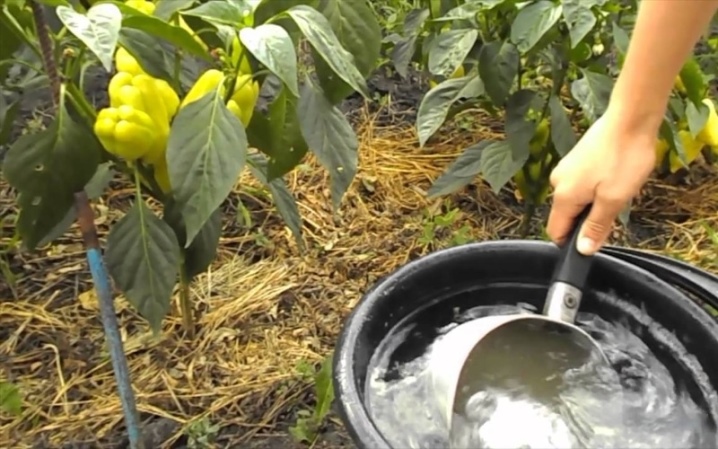
Application
Ammonia solution has been used in agriculture for a long time. It is widely used in this direction. Ammonium is an alkaline solution. That is why it is suitable for plants that need an alkaline environment. In our case, this is pepper. Let's consider this issue in more detail.
As a fertilizer
In this case, ammonia can be used both in the greenhouse and in the garden in open beds. The aqueous solution is used to spray the plants or to apply them directly to the soil.
So, the peppers are either watered or sprayed for feeding. But first, a specialized mixture of water and ammonia is prepared. After the solution has been infused for a few minutes, it can be applied.
Let's consider the options. If the leaves of the peppers turn yellow, then they need to be fed... To do this, pour 3 tablespoons of 25% ammonia into a 10-liter bucket of water. Apply the mixture to the soil under the very roots of the plants.
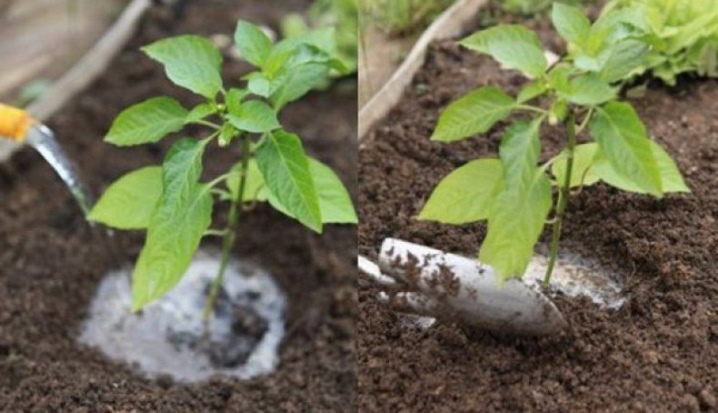
To spray the bushes, it is enough to dilute 1.5 tablespoons of 25% ammonia with 10 liters of water. Then you need to process your peppers with the mixture.
For seedlings you need to dilute 1 teaspoon of 25% ammonia with 1 liter of water. Pour the mixture over the seedlings.
If you find that your peppers are deficient in nitrogen, then dilute 1 tablespoon of 25% ammonia with 1 liter of water. Pour the solution over them.
Remember that this is the maximum dose. So be careful.
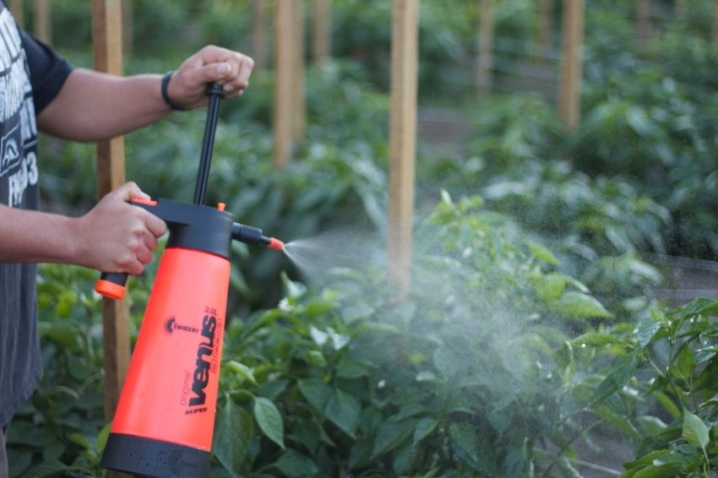
Pest control
The soil is often acidified. This is a natural process, since plant residues are rotted in the soil. Therefore, gradually heavy compounds begin to predominate in it: salts of chemical elements. This is why the transfer of nutrients to the roots of your plants becomes difficult.
In addition, the environment becomes favorable for the development of various disease-causing environments. It can kill your peppers with ease. Plants begin to starve, and this is a direct path to a decline in immunity.
So, let's consider specific options for pest control using ammonia.
If you have moles and mice in your area, put a cotton wool well moistened with a solution of ammonia at the entrance to the hole.
Another option: make several punctures in the vial (so that the ammonia begins to evaporate) and put it in the burrow. The product will scare away rodents with an unpleasant odor.


To get rid of the whitefly, you just need to observe the following proportions: 1 tbsp. l. ammonia 25% with 9 liters of water. Spray the plants next.
Slugs and caterpillars cause irreparable harm... Get rid of them with a concentrated solution poured into the root zone (at some distance so as not to damage the root system). The smell will creep out pests, collect them and destroy them.
Aphids are no less dangerous... To destroy it, dilute 50 ml of ammonia and 10 liters of water. Add 50 g of laundry soap to this mixture. Sprinkle with peppers.
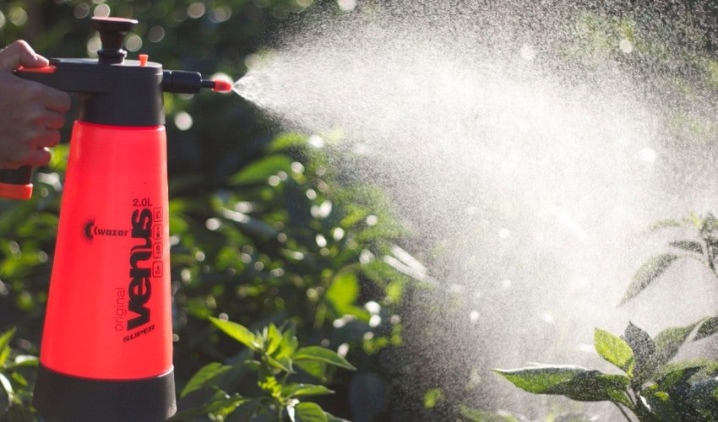
Seed soaking
Before soaking pepper seeds, revise them. Remove the substandard. The seeds should be the same size and bright yellow in color. It is advisable not to buy seeds, but to take them from those plants that have shown their high yields.
Pepper seeds are treated with ammonia in order to carry out complete disinfection. In addition, with the help of ammonia, the seed coat is destroyed. Thus, they germinate quickly. Therefore, future seedlings receive a certain immunity.
So, here's the exact recipe: pour half a teaspoon of ammonia solution into 100 ml of pure water. Stir and leave for a few minutes.
We take a clean flat container. We put a napkin at the bottom of the container. Add pepper seeds and cover with a napkin.Pour the finished ammonia mixture into a container with seeds. We leave for a few hours. After that, we spread the seeds on a new napkin, fill them with clean water for further germination.
After the first shoots appear, re-spray with ammonia. To do this, dilute 0.5 tbsp. tablespoons of ammonia in 5 liters of water and process.
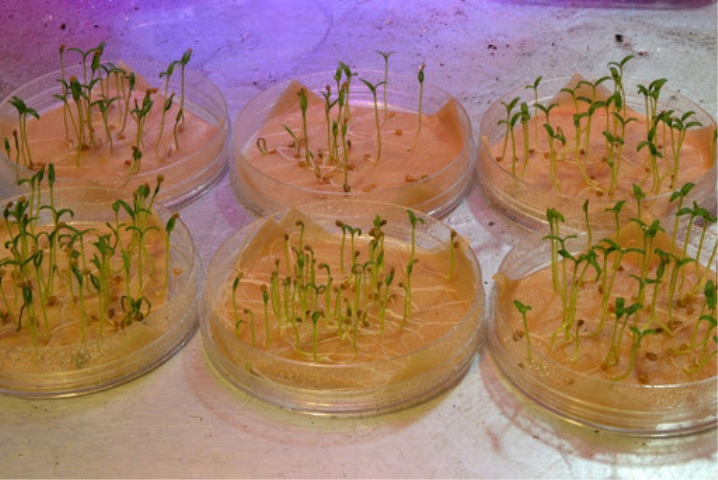
Security measures
You need to remember about the precautions. Ammonia solution is harmful to human breathing... When processing peppers, ammonia can enter your body. Therefore, euIf you decide to feed your peppers with ammonia, put on a face shield. Protect your hands with gloves.
If you feel unwell due to poisoning, drink warm milk. If more serious symptoms develop, call your doctor.
Remember: ammonia can destroy various surfaces of any object.... It eats paint and varnish and destroys wires. Therefore, do not allow ammonia to get on objects that will still be useful to you in everyday life.
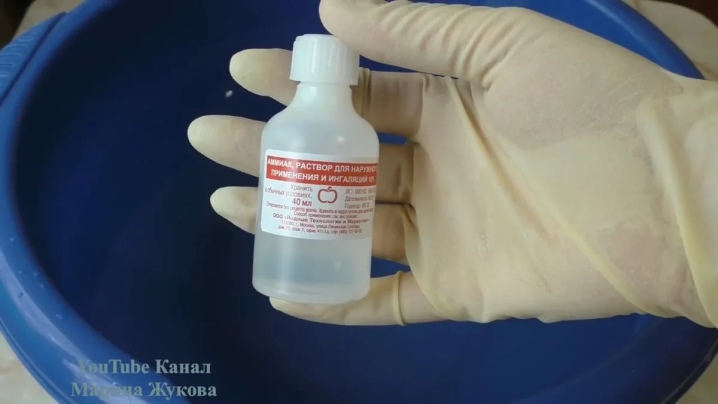













The comment was sent successfully.